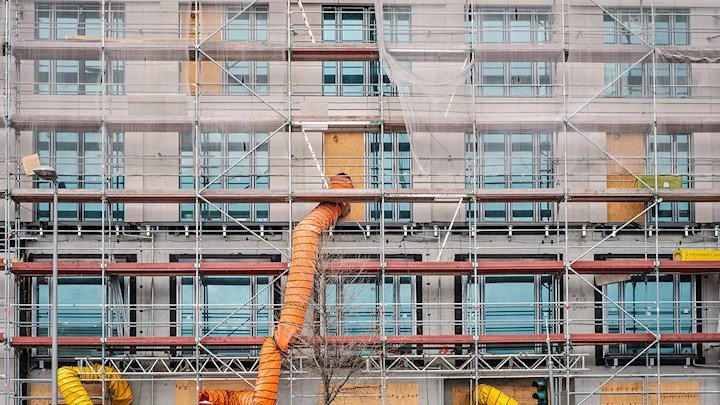Record-breaking natural disaster losses have caused significant rate increases and capacity constraints in both the personal and commercial Property insurance markets. In fact, the American Property Casualty Insurance Association (APCIA) characterizes today's Property insurance market as "the hardest market cycle in a generation."1
The NOAA National Centers for Environmental Information (NCEI) notes that 2022 was the eighth consecutive year that the US suffered at least 10 catastrophes that caused more than a billion dollars in damages.2 Hurricane Ian alone caused insured losses of $55 billion, according to Gallagher Re.3
Beware of Secondary Perils
In addition, we're seeing an increase in what is referred to as secondary perils, such as freezes, droughts, wildfires and severe convective storms. As of May 2023, seven confirmed weather/climate disaster events exceeded $1 billion in losses, including flooding in California, a central US tornado outbreak and several severe weather outbreaks in the central, southern and eastern US regions.4
"Frequent severe losses combined with the fact that we are experiencing losses in areas we haven't typically seen before are adding to the complexity of the reinsurance Property market," says Jay Pellegrini, RPS area president, Covington.
"Hurricanes hitting the coast are more intense and moving further inland, causing extensive damage that is altering catastrophe modeling in what was historically a moderate inland risk. Now, reinsurers have to redefine those risks due to the severity of the storms and the extent of their reach."
Property Rates Are High and Capacity Is Down
Losses from hurricanes and other catastrophic events contributed to significant reinsurance rate hikes, with January 2023 renewals experiencing double-digit increases.
"April reinsurance renewals were a bit more tempered due to the high rates in January," explains Pellegrini. "We will see what happens during mid-year renewals in July."
With significant reinsurance increases, insurers have also sought rate adequacy.
"On the personal lines side, depending on a home's proximity to the coastline, rates have risen anywhere between 30% and 100%. On the commercial side, properties in coastal-exposed areas have seen their renewals double over the last year," says Pellegrini.
Pellegrini also noted that the reinsurance market has pulled back on its capacity, particularly in the Gulf and Atlantic coastal areas, which means insurance companies are absorbing a greater share of a loss.
"Loss retention at the carrier level is impacted by the amount of an insurer's capital and surplus. Therefore, some smaller insurers are reducing their overall property exposure by limiting how much they write or opting to not renew accounts," he says.
Property Valuations Have Been Off
In the aftermath of hurricanes Laura, Ida and Ian, the inadequacy of property valuations leapt to the forefront.
"Prior to these huge losses, property values for residential and commercial renewals had not changed in the last eight to 10 years," explains Pellegrini. "The replacement cost for destroyed property following these events was significantly much higher than the values listed.
"In addition, we had supply chain issues during and after the pandemic, which drove material costs higher, followed by a labor shortage and rising inflation. Add to this the demand surge for materials that occurs following a catastrophic weather event, and you have a perfect storm for increased costs to replace and repair properties in an environment where valuations are off."
As a result, there's now greater underwriting scrutiny and more requirements to value properties correctly and ensure rates reflect these values.
"On the commercial side, we're seeing rates double where values have been 50% off and require adjustment," says Pellegrini. In addition, according to RPS's 2023 US Property Market Outlook, some insurers are moving away from blanket limits in a policy to more restrictive scheduled limits that reduce the ability for insureds to claim for loss events across multiple locations in one single claim.
Moving Ahead
In this challenging Property insurance market, clients are absorbing more risk by carrying larger deductibles and higher retention levels. Some insureds are seeking coverage in the Lloyd's market or are accepting less coverage, while others with hard-to-place risks are getting coverage, albeit limited in scope, from the market of last resort.
There are also efforts to facilitate the entrance of additional small reinsurers into the market.
"For example, the Insure Louisiana Incentive Program, which was successful after Hurricane Katrina, was again implemented following Hurricane Ida," says Pellegrini. The program provides funding to insurers participating in the voluntary Property insurance market. It's designed to increase the availability of insurance, increase rate competition and reduce the volume of business written by the Louisiana Citizens Property Insurance Corporation, the market of last resort in the state. According to the Louisiana Department of Insurance (LDI), nine companies applied for funding.
Pellegrini expects the Property market to remain challenging throughout the rest of the year and into 2024, depending on the next couple of hurricane seasons.
"If we have two good years, the market will begin to ease, with more reinsurance allocation and a stabilization of rate increases — just as we have seen during other firm market cycles."
In the meantime, working with RPS provides brokers with many resources and access to carrier relationships for solutions.
"We can go to multiple markets to place coverage," says Pellegrini. "Whereas in the past we may have needed one or two markets, we are now accessing several companies. We're getting it done."
Contributor Information
Sources
1"US P & C Insurers Facing Hardest Market in a Generation: New White Paper Examines Mounting Inflation, Claims, Reinsurance and Other Capital Costs," American Property Casualty Insurance Association, 27 Mar 2023.
2Smith, Adam B. "2022 US Billion-Dollar Weather and Climate Disasters in Historical Context," Climate.gov, 10 Jan 2023.
3Lerner, Matthew. "Natural Hazards Insured Losses Estimated at $140B in 2022: Gallagher Re," Business Insurance, 30 Jan 2023.
4"Billion-Dollar Weather and Climate Disasters," National Centers for Environmental Information, accessed 12 Jun 2023.
5"Donelon Announces Nine Companies Applied for Over $60M in Insure Louisiana Incentive Program Funding,"Louisiana Department of Insurance, 14 Mar 2023.




